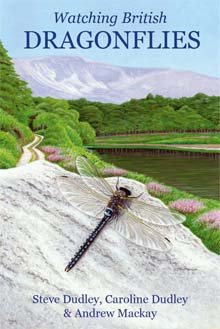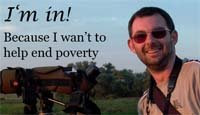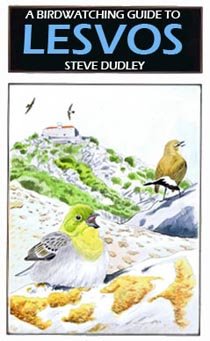Lead by - yours truly
Guests - Denise, Syl, Marilyn, Jean, Barry and Jenny
Woodlark Thetford Forest.

All bar Denise opt for the pre-breakfast outing. Driving across to Tuddenham, we encounter our first Breck heaths nestled between the sand and stone open arable fields. The fields are stuffed with Red-legged Partridges, Pheasants and the occasional Brown Hare. The short sward heaths were teeming with Rabbits – hundreds of them in every direction! We scan one section and the whole heath appears to be dotted with pairs of little ears! Syl spies a couple of Great Spotted Woodpeckers on a telegraph pole in front of the van. We park up and almost instantly Steve picks out our early morning quarry – a Stone-curlew. Scopes are soon trained on to this odd-looking heathland dweller. ‘Where there’s one there’ll be two’ states Steve, and sure enough, a second bird is found within feet of the first. And a third. Then a fourth! We enjoy the Stonies before taking a wander along the track. The air is full of the rich spring song of Skylarks. It’s wonderful! Meadow Pipits chase each other across the heath in the dizziness of spring fever. The woodland edge is alive with birds. Blue, Great and Long-tailed Tits flit around. A flock of Fieldfares alight in the top of one of the birches before swooping down to feed hungrily on the Rabbit-grazed heath. They’re not the only thrush either. Mistle Thrushes ‘rattle’ as they swoop through the trees and Blackbirds ‘chack’ to one another. A pair of Woodlarks chase each other around briefly before disappearing out of sight. Damn! Steve explains they are known as ‘Lulus’. ‘Why’s that?’ asks Jean. ‘Well’ begins Steve. ‘When they sing, they go. . . . yeah-eh-eh-eh-eh-eeh-eh. I just wanna . . .’ Steve’s impersonation of the wee Glaswegian songstress might have been good enough for everyone to get who it was, but he needn’t worry about winning Stars in their Eyes.
The unexpected sight of a couple of Shelduck ‘grunting’ as they fly across the heath and Green Woodpeckers ‘yaffle’ from all directions. Our hour is up so its hot-foot back to the hotel to join Denise for a sumptuous breakfast.
After breakfast we head into Thetford Forest near Elveden. The conifers are quiet apart from a lone Coal Tit belting out its own hit single. But there are no winter finches or Crossbills. A more open area finds a Chiffchaff feeding a couple of Great Tits. As Steve begins to explain the likelihood of seeing a Goshawk ‘Well, we have about a one in fifty chance . . .’ he looks up there’s a male Gos drifting over the clearing! Everyone is on to it in a flash, including Syl who is on the phone! Wow! Everyone is ecstatic as we head off towards the area we were intending to look for Goshawk from. As we arrive there are several birders present, all looking in different directions. Scanning the distant trees Steve’s spies a raptor. ‘Another Gos!’ yells Steve. We are all on to the bird, another male, as it circles and then glides off across the treetops. Two Goshawk’s in ten minutes! But the excitement doesn’t stop there. The clearfell area in front of us has rows of mangled stumps and branches acting as shelter belts for the seedling pines. The distinctive, almost melancholy sound of a Woodlark rings out. Jenny tracks it down and we enjoy our first decent views of this woodland star. Denise then spots a male Yellowhammer sat up on a near branch. It’s out in the open back on, its gleaming yellow head contrasting with the mottled plumage and brilliant chestnut rump. The Woodlark takes to the air and flies around calling enabling us to see its distinctive ‘no-tail’ shape. Its all wings! It eventually lands, right by the Yellowhammer and we get great views including its funky DJ eyebrows ending in a V on the back of its neck.
We transfer to another open Breck heath (more Rabbits!) where we are soon watching two more Stonies (Denise’s first). Syl picks up the first two of four ‘normal’ Curlews which are soon dancing around the sky uttering their ‘bubbling’ song. In the long grass a tail appears to have lost its owner. Eventually a Pheasant appears below it and claims ownership!
With hunger pangs fast getting the better of us, we make haste for our lunch stop. But do we? The main Brandon road is at a standstill so its ‘route B’. But the A11 is even worse (naturally!). So route C is deployed as Steve winds his ways down the back roads finding our way to Santon Downham, and to the St Helen’s picnic site which has the three essential things of a good lunch stop. Picnic benches. Loos. And Bramblings! Just as we sit down to tuck in to our sarnies, Steve picks up a female flitting around a riverside tree. We all enjoy good scopes views (with full mouths) before a moulting male (alas without black head) is also found.
With lunch over, we head off for a walk, across the river and in to the conifer wood. The tall pines and blue skies are almost alpine looking. Goldcrests sing all around us but it takes some time to eventually find one when Jenny picks one up feeding in a nearby tree. Goldcrest clocked it’s onwards until Steve stops us dead in our tracks. ‘Siskin!’. We look upwards to search for the owner of the clear ‘spee’ calls and their, dancing between the treetops is a male Siskin, the yellow panels on wings and tail appearing translucent as it flurries between trees. It eventually takes a break and lucky for us, lands out in the open and lets us have some cracking views. ‘That’s my first Siskin this year’ comments Marilyn, hinting at the dearth of Siskins in most parts of the country.
Walking along the road to the village we pick up a Marsh Tit and get great views of a couple of Nuthatches and another Brambling. We take the riverside walk back to the car park adding a few more Great Spotted Woodpeckers, Mute Swan and a Treecreeper to our tally. Jenny points out a tree stump featuring an obvious face. ‘That’s ET’ says Steve. And it is. Spot on!
We head for Lynford and a frustrating hour searching for the not-to-be-seen Hawfinch. The trees where they are meant to be are alive with Redwings, Song and Mistle Thrushes, finches, tits, Jays – but no mighty ‘seedcrackers’. Jenny and Marilyn see a Little Grebe on the lake, but its time to move on.
We arrive at our final stop, a woodland area near Watton. We walk along the rides as silently as possible. Nothing. Steve goes for a wander and soon beckons the group to him. A frustrating few minutes pass as we track our quarry. Bingo! There it is. A day-glow male Golden Pheasant. What a sight! We watch it as it picks at the ground as it wanders along the heavily scrubbed woodland floor. Its golden mane gleams in the half-light, and you can still make out the red nad blue of the plumage. Stunning!
With dusk approaching, not to mention our dinner, we head back to Bradwell, broad grins on tired faces.
We do our first checklist either side of a great dinner before retiring to the bar for coffee and a few laughs with the hotel owners Carol and Richard - Guatemalan bandits, birders disappearing in jungles – the usual sort of stuff!









No comments:
Post a Comment